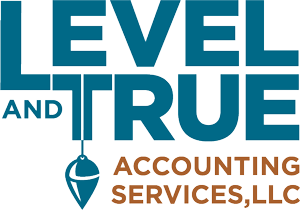Accounting, like many occupations, requires a certain aptitude and personality. Maybe it’s like anchovies – either you really like them or you really don’t. For those of us that enjoy accounting and are good at it, the basic concepts make perfect sense. For most everyone else, it can be a bit overwhelming.
A skilled accountant is an important part of an effective business team. Many businesses also utilize the services of a competent bookkeeper to handle the daily accounting processes. But savvy business owners don’t remove themselves from the equation. By working along with their accounting team, they are able to ensure the integrity of their numbers, and will have a better understanding of what those numbers mean for the ongoing success of their business.
As a business owner, are you a little daunted by accounting terminology? In this article we’re going to explain some basic but important accounting concepts. And while you still may not like anchovies after you have read this article, hopefully you’ll understand better why you need them.
Which accounting method should I use?
It’s very essential for businesses to understand which accounting method they use to keep their financial records. Why is this so important? Because it has a huge effect on their taxable income at year end. It also determines the amount of detail and time required to maintain the books (a common term for the accounting records).
Most small businesses use a simple method of tax accounting known as Cash Basis accounting. With this method, income (which is the money you earn in the business) and expenses (the money you need to spend for the business) are recorded when the money changes hands. If you haven’t been paid for a job, it’s not considered income for tax purposes. If you haven’t paid your subcontractors, it won’t be considered a taxable expense until you do pay them.
This method is simple because the bank statements pretty much tell the full story. But that often doesn’t reflect the reality of business, since the timing of the payments can increase or decrease your net income, which is the amount of income you will eventually be taxed on.
Traditional accounting uses a more sophisticated method called Accrual Based accounting. With this method, income is recorded when it is earned and expenses are recorded when they are incurred, instead of when the money is received or paid out. This provides a better reflection of the financial health of the business, but also requires considerably more effort to maintain.
Accrual is the required accounting method for non-for-profit organizations and large corporations, such as those listed on the stock market, and by companies that typically carry inventory, like retailers and manufacturers. Other businesses may voluntarily choose the accrual method, but once an accounting method is elected for tax purposes, it’s a permanent decision for the life of the business. To change methods for tax reporting purposes would require special permission from the IRS.
Some accounting systems like QuickBooks and XERO have the ability to report in both cash and accrual simultaneously. This is a definite advantage for cash-based businesses because you get the best of both worlds: you can pick and choose which features of accrual accounting you want to use without having to make fancy adjustments for tax purposes. Many cash based businesses need to invoice clients and track their Accounts Receivable (money due from clients). Businesses may also choose to track bills owed in Accounts Payable (money due to vendors) so that they can make better cash flow decisions.
What is my Chart of Accounts?
The Chart of Accounts is the backbone of the accounting system. All types of income and expenses are tracked in categories called accounts that are eventually summed up on the Income Statement (often called the Profit and Loss). The accounts on the Balance Sheet are historical registers of business assets such as bank balances and equipment purchases, along with business liabilities, and the owner’s equity in the business.
The Profit and Loss and the Balance Sheet are the two major financial statements. Most business owners feel comfortable analyzing their income and expenses, but the Balance Sheet accounts can be a little more confusing. However, the Balance Sheet will be your accountant’s “go to” statement, because until all the totals on it have been confirmed, the Income Statement isn’t considered accurate.
A good chart of accounts includes all the accounts that the IRS requires for tax reporting as well as accounts that provide the business important information for decision making. For instance, for tax purposes the business needs to know the total Utilities Expense for the year, but management may also want to be able to track the different types of utilities in more detail (electric versus gas). A word of caution: a good financial statement should be concise, so be careful about creating too many accounts. Your accountant can provide you with guidance in this area.
Is my business Fiscal Year the same as the Calendar Year?
In many businesses the fiscal year and the calendar year are one and the same, but that’s not always true. All businesses report payroll on a calendar year (January to December) and so are 1099’s. But the calendar year isn’t a convenient stopping point for some businesses because their natural business cycle doesn’t break well in December. Imagine a retailer trying to count inventory of December 31st, right after a grueling holiday sales season (and right before everyone comes back with gift cards to spend and returns to make).
Like with the Accrual versus Cash Method, the fiscal year choice is basically a one time decision. Does that mean that if you start your business mid-year, that’s the month your fiscal year must start? Absolutely not. Choosing a fiscal year start should be based on your typical business cycle, not the month you happened to open for business. That first year would just be a partial year.
What’s the best Entity Type for my business?
There’s no right answer to this question. It depends on a lot of factors and each business (and business owner) is unique. Choosing your entity type should be done carefully, and changing it later could be costly, so make sure to consult your tax accountant before making a final decision. The tax consequences for each entity type can be drastically different and the structure of the chart of accounts should reflect the entity type.
The simplest small business type is the sole proprietorship or single-member LLC. Both types report income on the owner’s 1040 Income Tax return (on Schedule C). Partnerships and multi-member LLC’s have their own business income tax return, the 1065. The owners receive a Schedule K that they include on their own 1040 (on Schedule E). The tax laws for each of these types of businesses are similar, but when more than one owner is involved, the accounting requirements are a little more involved, and the tax return is a bit more complicated (and therefore more expensive) to prepare.
S Corporations and C Corporations are very complex entities and have very different tax rules. Some LLC’s elect to be treated as S or C Corporations. If you are choosing one of these types of organizations, forget about bookkeeping in a shoe box. You will need to have a formal accounting system and your tax preparation fees will be considerably higher. But there can be benefits to the owners since they may qualify as employees and as such would be paid a salary.
What does this all mean for my business?
You may wonder what anchovies have to do with this article. Not much. I don’t usually order anchovies on my pizza. But did you know that Caesar dressing contains anchovies? That’s what gives it that incredible edge that turns Romaine lettuce into something amazing.
Sometimes a very essential ingredient isn’t obvious unless it’s missing. That’s very true in accounting. When the processes work well, the accounting staff are seldom noticed. But what we do is essential. We are part of the business team and work hard every day for the success of your business.
– Written by Gina Palacio, Owner of Level & True Accounting Services LLC

